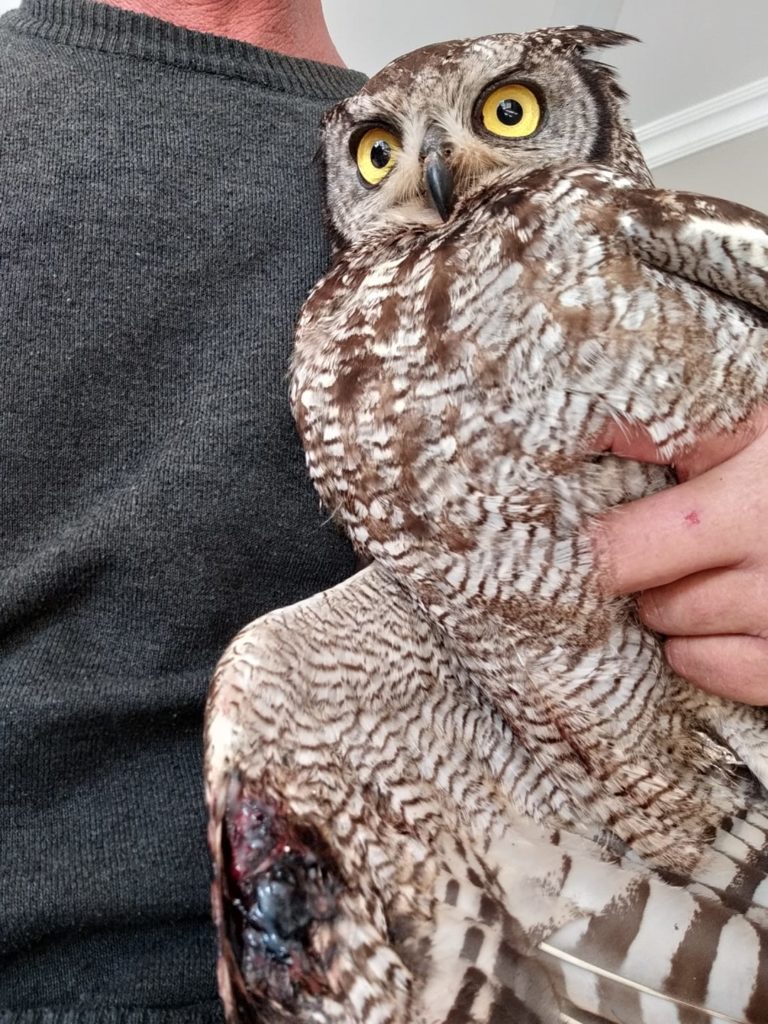Conservationists are concerned about declining owl populations all over the world. The Owl Orphanage established and run by Jacques Nel in St Helena Bay on the West Coast seeks to provide a sanctuary for these predatory birds.
Owls are particularly vulnerable during their breeding season – which takes place during early spring – and Nel’s orphanage has stepped in to “protect these birds from extinction”, according to SABC News Western Cape.
Other threats that endanger these animals and lead to chicks being abandoned include rat poisoning, loss of habitat and superstitions.
The orphanage’s website also lists climate change, construction, wire fencing, electrical overhead cables, increased traffic and domestic cats and dogs as more reasons why owls need a place of refuge.
In a video interview with the SABC, Nel explains the danger of wire fencing and rat poisons pose to these birds.
Owls cannot spot wire fencing because of the way they see and focus. This results in the birds getting trapped and injured.
One of the three Spotted Eagle Owls rehabilitated by the orphanage flew into a razor-wire fence and ripped most of their left flank, including the wing. Nel feared the worst but the owl survived after being treated by a veterinarian and recuperating in the orphanage.
Nel explained how rat poisons affect owls, saying, “with owls, it can take between 12 and 14 days to die.”
“And that’s horrid because [the poison] depletes the vitamin K in their system and then they start bleeding internally.”
The Scientific American has blamed ‘super-toxic’ rat poison for this, or more precisely: “an extra-potent class of rodenticides that has flooded the market in recent decades’ that cause owls to bleed to death from stomach haemorrhages.”
“We’ve had a few successes with poisoned owls,” said Nel. “We’ve pulled them through and it takes up to three months, medically for that owl to recover.”
Nel told the SABC that owl breeding season is imminent and that the orphanage is expecting to provide a sanctuary to Spotted Eagle Owls and baby Barn Owls. However, the orphanage needs all the help it can get, as so many abandoned owl chicks and poisoned or injured birds end up in their care.
“The Spotted Eagle-Owl is the most common owl in southern Africa and is often spotted in Kirstenbosch National Botanical Garden. This nocturnal bird of prey lives and breeds in a variety of habitats, including alongside people in their cities and towns,” according to the South African National Biodiversity Institute (SANBI).
Owls play a pivotal role in an already compromised ecosystem and need to be protected. Nel explains that if they are left alone they could render pesticides, like the rat poisons that kill them and other animals redundant.
“These animals keep pests at bay,” said Nel “If we can bring that balance back into the environment by increasing the numbers then hopefully we can convince the communities to use less poisons.”
To donate to the Owl Orphanage, visit their website www.theowlorphanage.co.za
ALSO READ: Rat poison use is affecting caracals
Picture: Facebook






